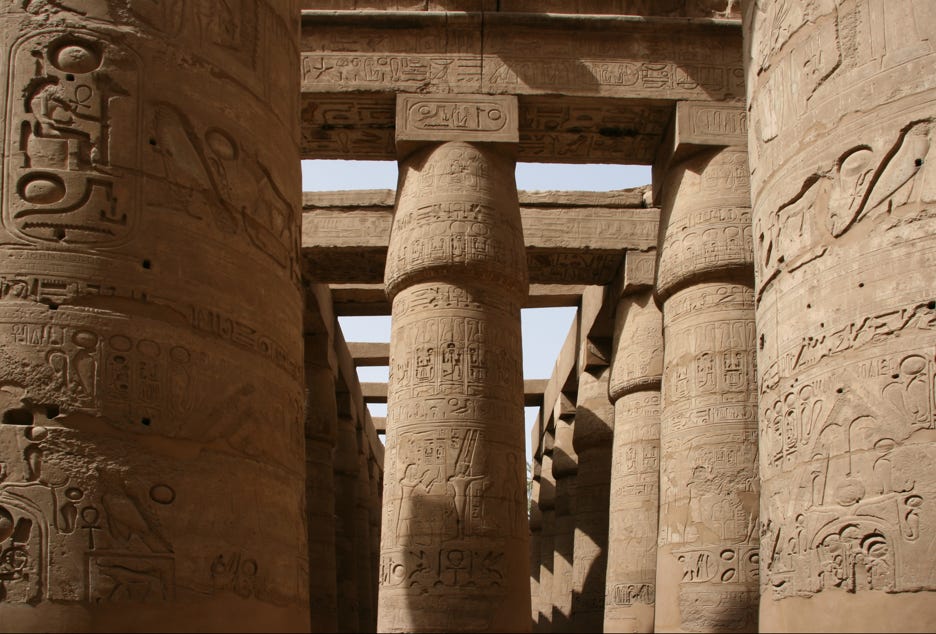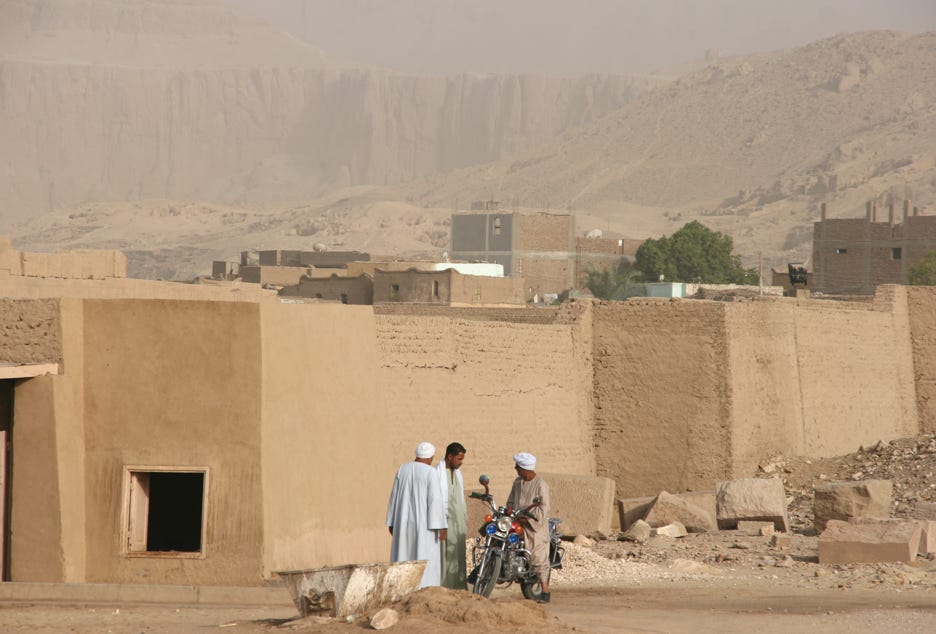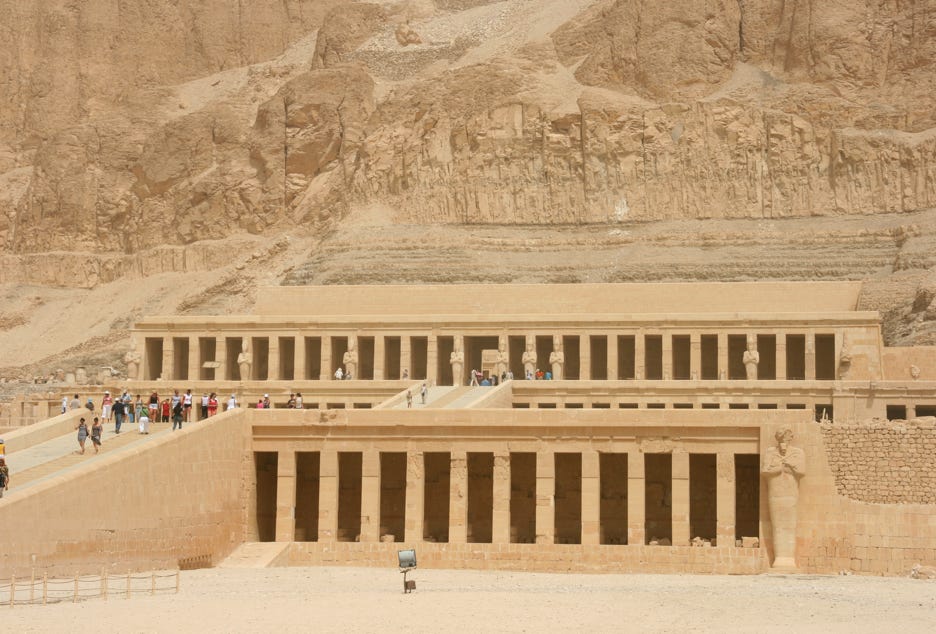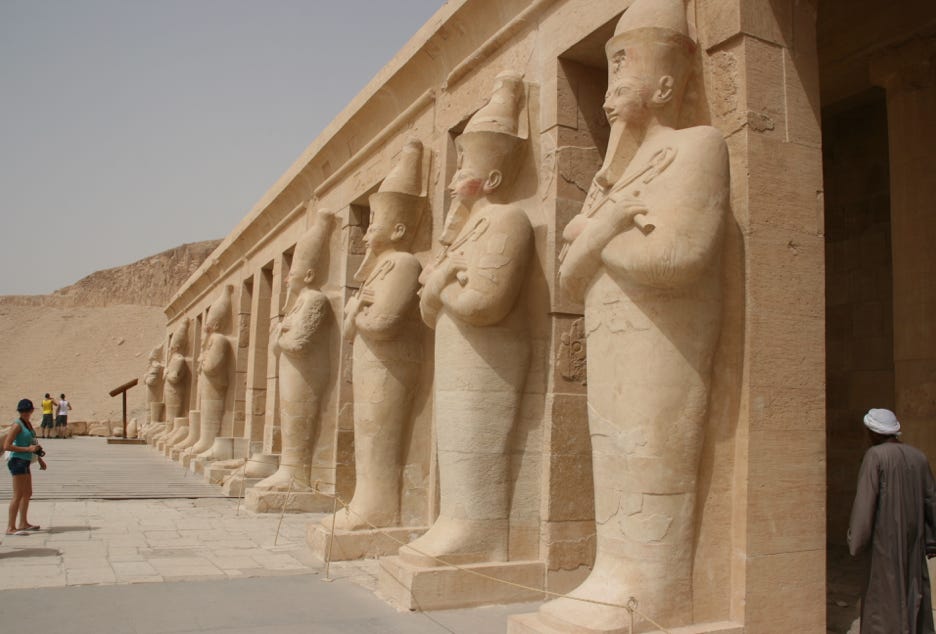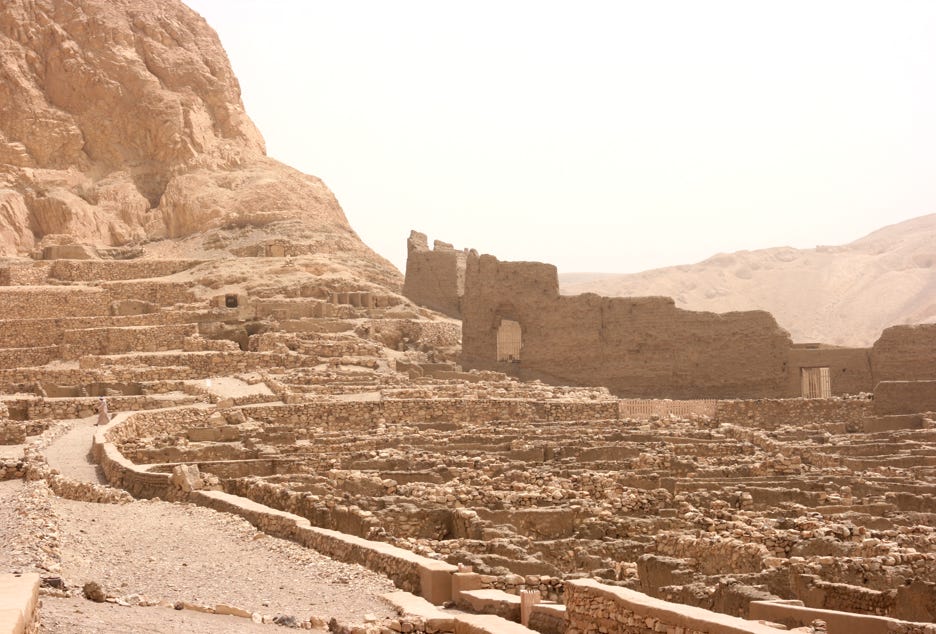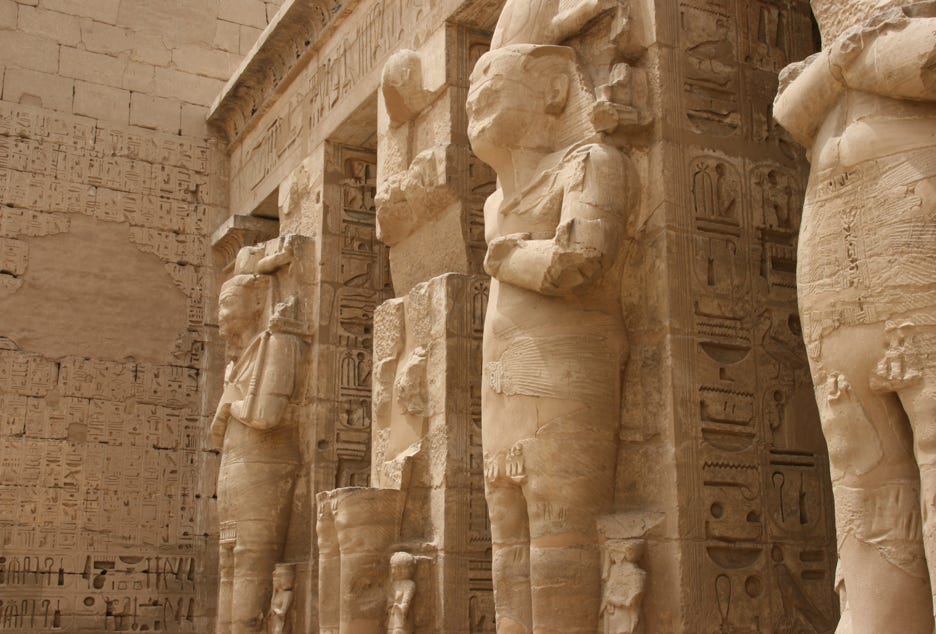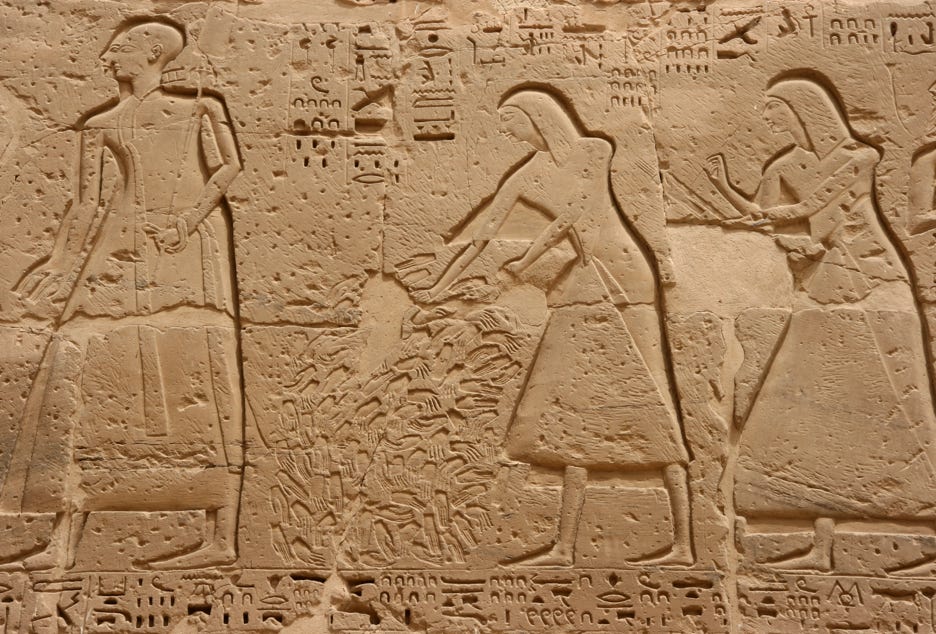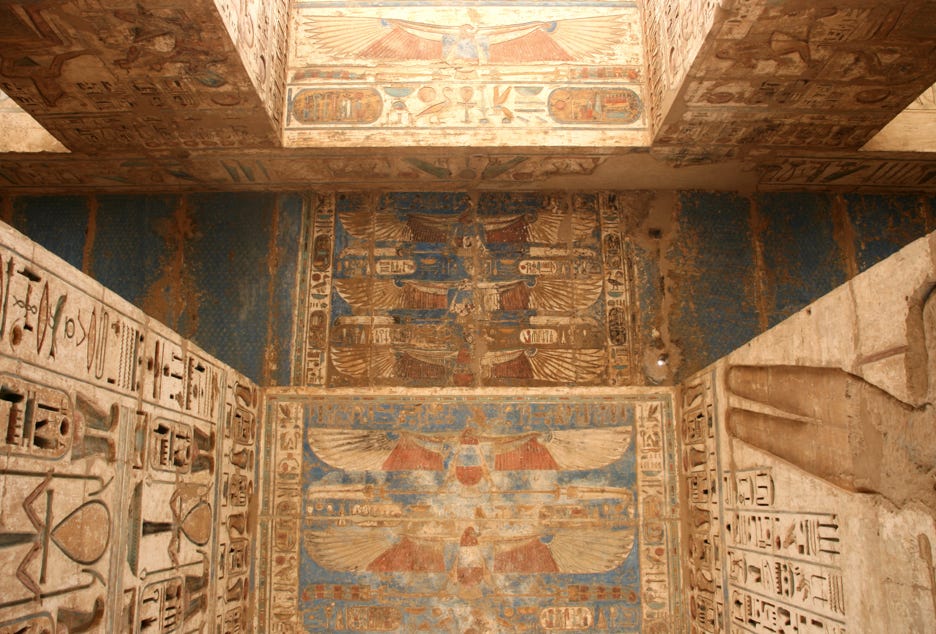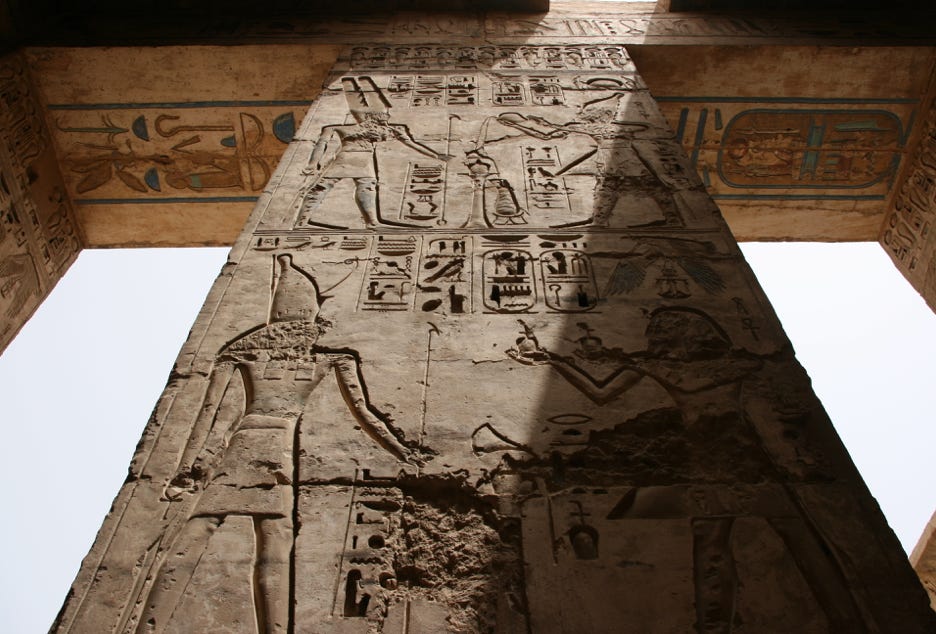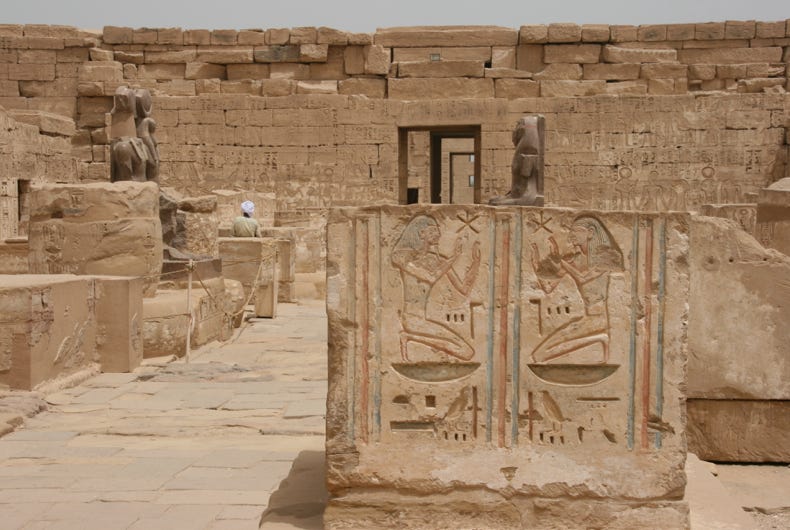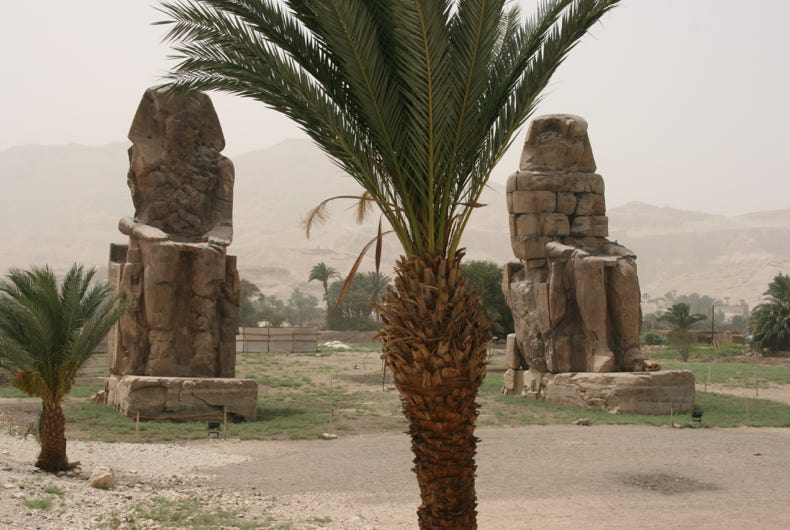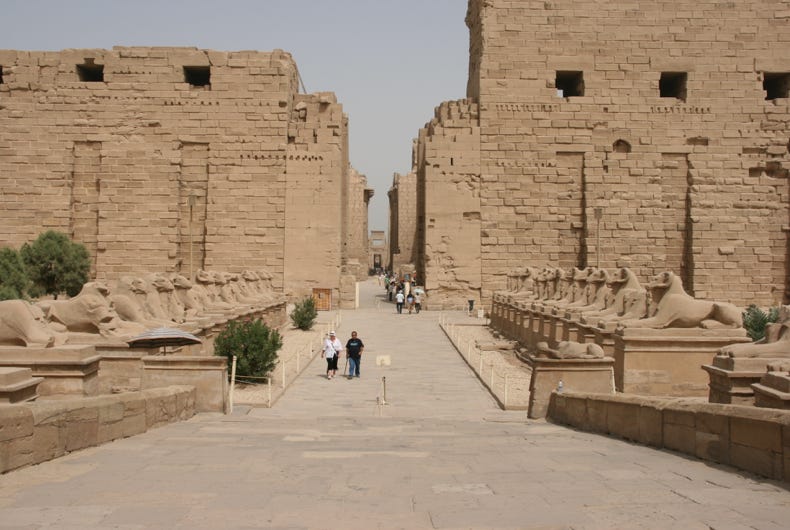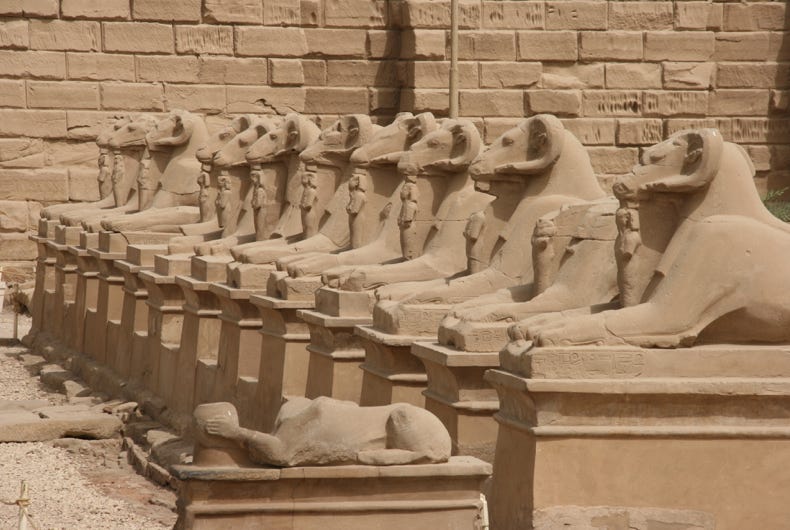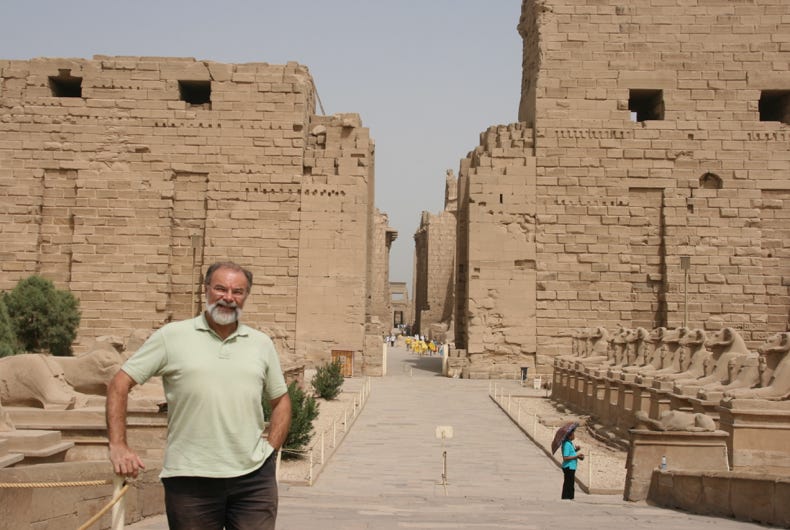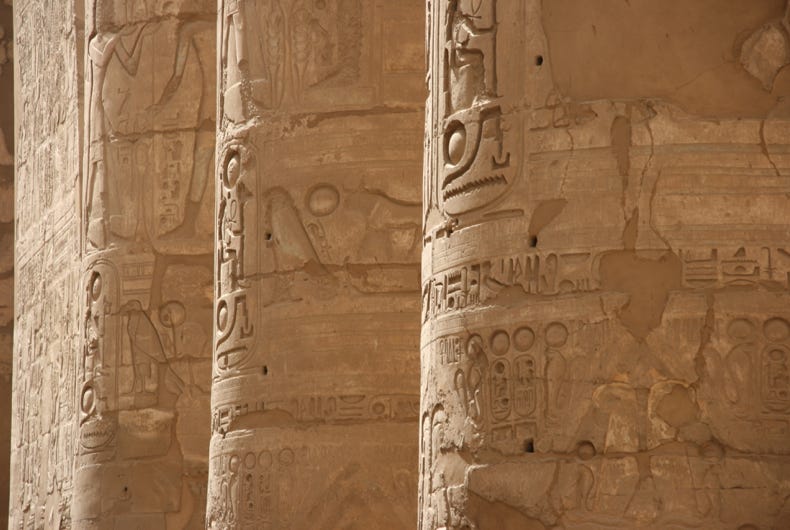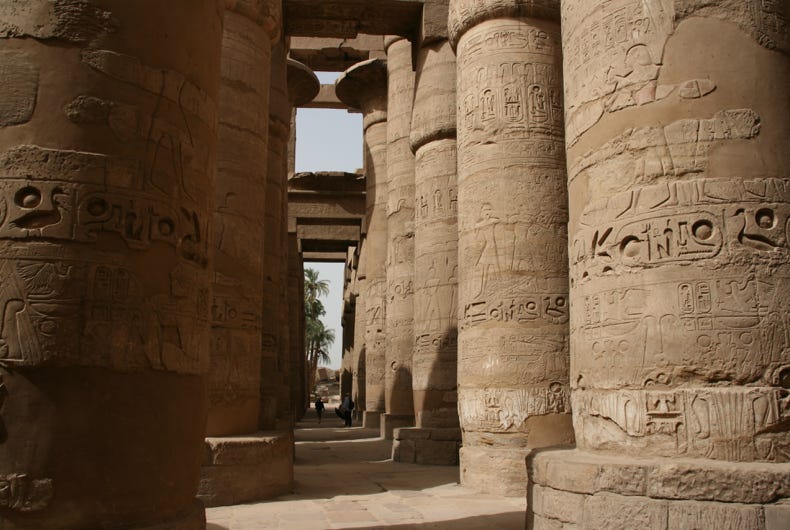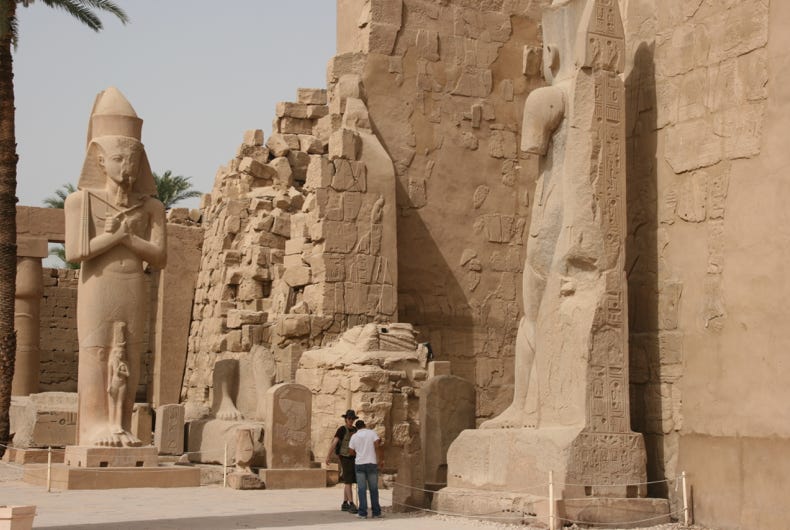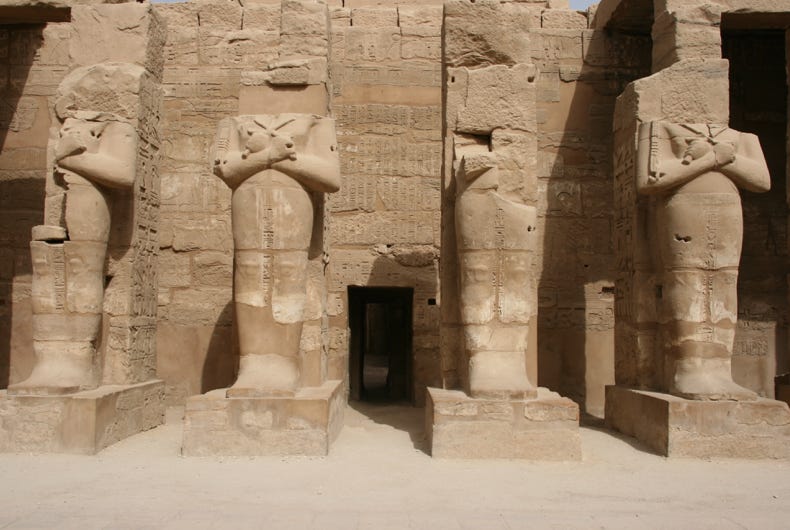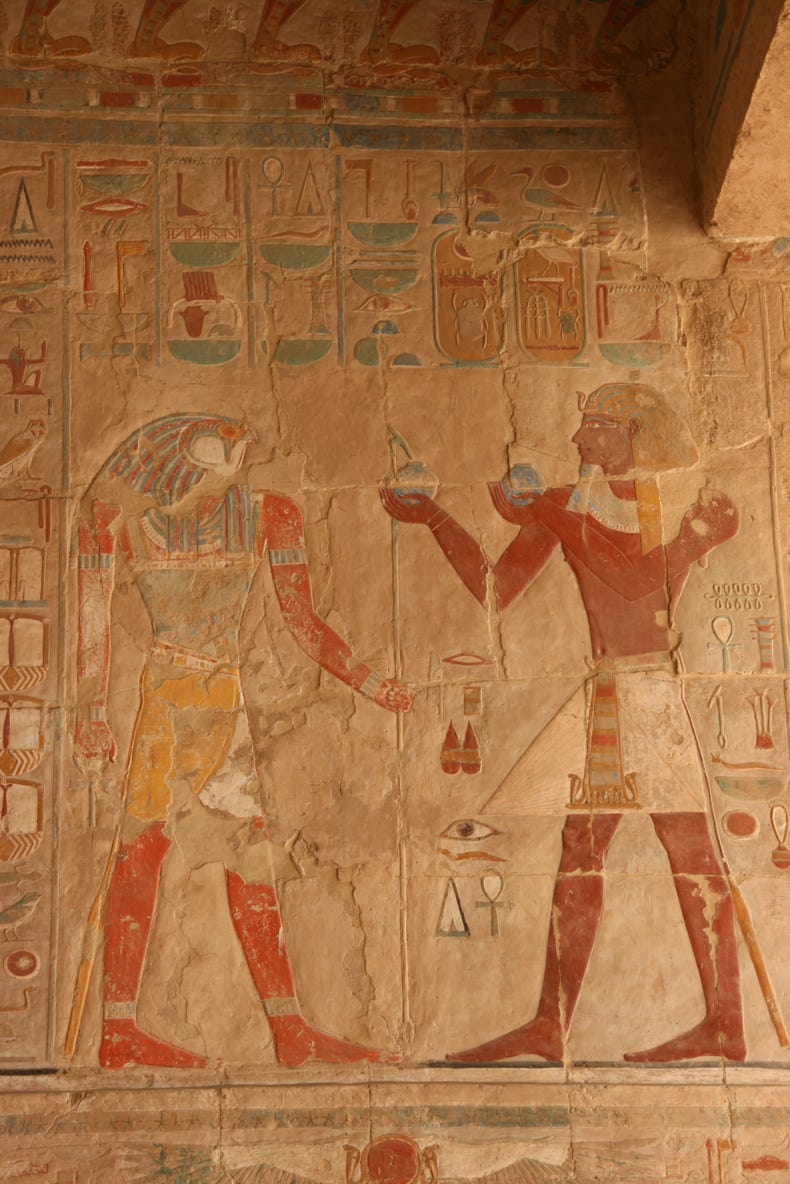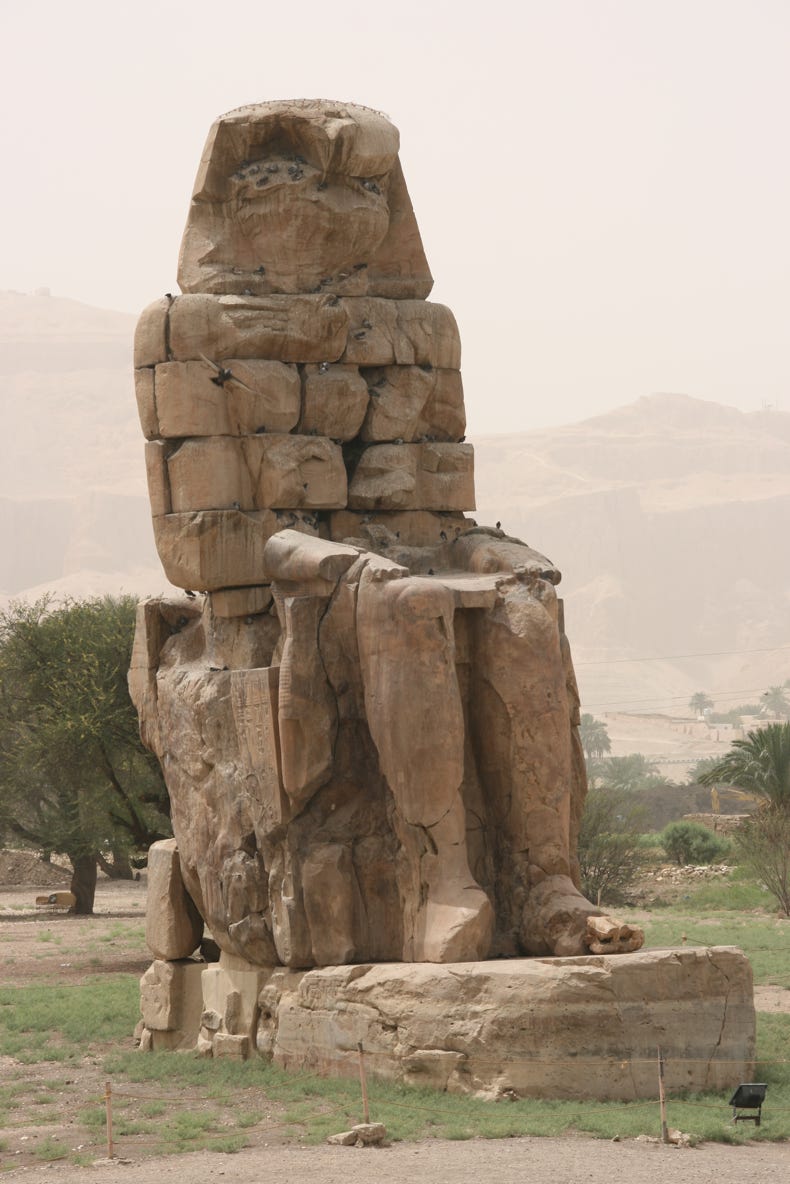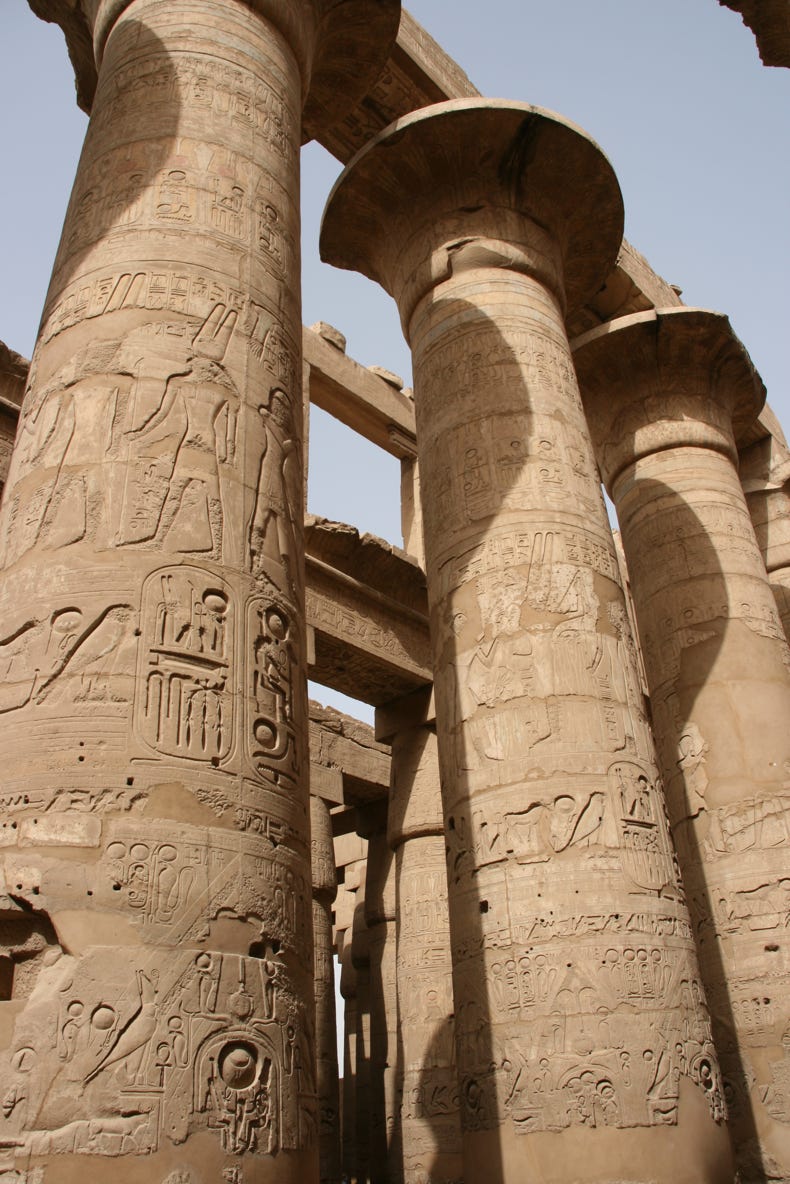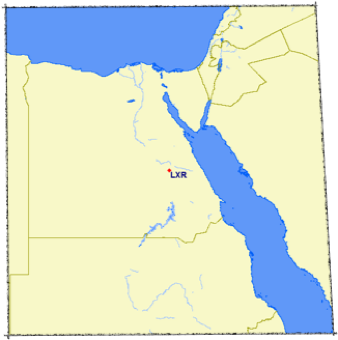
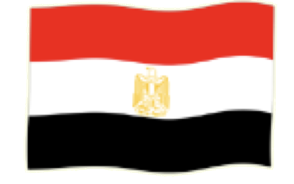

I am typing today’s travel diary on the evening train from Luxor to Aswan. I splurged for this trip, spending $8 for a 1st class ticket rather than $6 for 2nd class. Although this gave me a wider seat with more leg room, it still provided the standard double- glazed windows that are made opaque by the thick layer of dust between the glass panels, and it did nothing to improve the punctuality. I was told yesterday that the 5 pm train would leave at 6:10 pm, so I dutifully arrived at the station at 5:40 pm, bought my (splurge) ticket, and was told that the the 5pm train was now called the 6pm train – which seemed eminently sensible! What they didn’t know, or didn’t tell me, was that the “6 pm train” would not depart until 8 pm. It may not sound much, but standing on an exposed railway station platform in the hot winds of an Egyptian heatwave for two and half hours in preparation for a three hour rail journey is not really all that pleasant.
The heatwave continued unabated today. Last night, it was still 38°C at midnight. At 3 pm this afternoon I saw a roadside digital readout that gave the temperature as 50°C in the shade with a relative humidity of 17%. Even for an Egyptian summer, this is extreme - just my luck! It may not have been ideal sightseeing weather, but it seemed to keep the crowds away and at least there was zero risk of rain.
Despite the heat, I had a very busy day of sightseeing. There is so much to see in Luxor, and my time was far too short. Fortunately, Mara had arranged an excellent guide and a great itinerary for me, and I was able to make the most from my short time in Luxor.
My early breakfast was delivered to my room at 6:30 am with a punctuality that would be admired and appreciated by any Hong Konger. Then at 7:00 am sharp, I set off with two other guests at Mara’s to the West Bank of the Nile where may of the ancient structures are found. The ancient Egyptians tended to use mud bricks for ordinary houses and stone for tombs, temples and funeral structures, mainly because these were seen to be permanent structures. The ancient Egyptians saw the west as representing the end of life, most of permanent buildings are therefore found on the West Bank of the Nile.
Our first stop was the Valley of the Kings. This is a barren valley, shaped somewhat like a long, thin amphitheatre in which the pharaohs’ tombs were located during the heyday of ancient Thebes. Unlike Giza, no pyramids were built, and the tombs were dug into the rocky hillsides, with the digging continuing for as long as the pharaoh lived. Therefore, pharaohs who reigned for many years tend to have long, deep tombs, whereas those who reigned for shorter periods have smaller, more shallow tombs.
No cameras are allowed inside the tombs, presumably because it would destroy the thriving postcard industry. The frescoes are remarkably well preserved, and the colours are so vibrant it is very hard to believe that they are about 3,500 years old. The scenes shown depict the ancient Egyptian view of the afterlife, and they look somewhat like the much more faded exterior fresco shown here. I visited the interiors of three tombs - Ramses I, Ramses III and some other pharaoh with a complicated name. The tombs were remarkable, not only for the stories they tell, but for their exquisite artwork and variety of scenes portrayed.
The second stop was much more visible from a considerable distance despite the pall of fine orange dust blown up by the hot winds into the air today. Deir al-Bahri was the funerary temple of Hatshepsut, a queen who ruled as a pharaoh. The temple occupies three terraces and contains some beautiful statues, many of which were desecrated by Hatshepsut’s son-in-law, Tuthmosis III. Until a few decades ago, the temple complex was a pile of disorganised rubble. However, a Polish team of archeologists has done a brilliant job in sorting the stones and rebuilding the main part of the complex.
The third stop was known as the ‘workmen’s village’, being the remains of the village where the workers who helped build the royal tombs lived. I was told that they made quite good money as befitted the prestige of their work, but there was a downside - when each tomb was finished and the pharaoh was mummified and buried, all the workers were executed so that they would not reveal the location of the tomb and its treasures. Beside the workmen’s village there were several small tombs for senior managers, and these contained the most vibrant frescoes I saw today – beautiful coloured scenes of everyday life in ancient Egypt. Unfortunately but understandably, cameras were once again forbidden.
After stopping for a lunch break (which involved drinking more water than eating food), we headed across the road to what I consider to be the highlight of my West Bank visit - the Medinat Habu, or Funerary Temple of Ramses III. This is the second largest temple in Luxor, and the only one with a tower. The carvings were deep and well preserved, and included some fairly gruesome images of what the ancient Egyptians did to their enemies – chopping out tongues, severing heads and chopping off hands. A rear section of the temple was unfortunately demolished by Turkish rulers at one time who used the stones to build a soap factory.
Our final stop upon leaving the West Bank was the Colossi of Memnon. These two fairly poorly preserved 18 metre high statues are all that remain today of an ancient temple. As you can see by the photo on the right, there was no reason to stay too long in the searing heat to study these statues.
The same could not be said for my last visit of the day – and indeed the highlight of my day if you exclude the multiple 1.5 litre bottles of cold water – the temples of Karnak. Located on the east bank of the Nile a few kilometres from the city centre of Luxor, this huge temple complex covered almost 2 square kilometres and was built over a period of about 1500 years.
Entry to the Karnak temples was via a pathway lined with sphinx with rams’ heads. The rams’ heads reflected the ancient Egyptian belief in the sun deity, Ra, who was thought to take the form of a scarab beetle in the morning, the sun itself in the middle of the day, and a ram in the evening. The front walls were massive in scale, and interestingly they still had the bank of sloping earth at the back that had been used to move the stones into place during construction. The front walls themselves were unfinished (i.e they had no pictorial carvings) because the pharaoh at the time of construction died and his successor (like all pharaohs apparently) was more interested in promoting his own memory than that of a predecessor.
The scale of the main temple, the Temple of Amun, was breathtaking. It is regarded as the largest religious building ever constructed, and although it is no longer at its full height, the huge pillars make humans feel as though they are microscopic in scale when standing next to them.
Seeing the complex in the afternoon light was fantastic - ancient Egypt at its best.
I finished my sightseeing at a little after 4pm, and Mara had kindly offered to let me back into my room to have shower before catching the train if I had time. After my day in the heat, a shower was a godsend, and I am sure I survived the wait on the railway station platform and the train ride in much better shape as a result.
After a long day, the train finally arrived at Aswan at a little after 11pm. However, that was not the end of the journey. My hotel was on an island in the middle of the Nile River. A short taxi ride took me to the ferry wharf, and after several attempted but ultimately abortive attempts by the taxi driver to short-change me, I took the ferry across the calm waters of the river to the hotel, eventually arriving in my room at a quarter to midnight.

